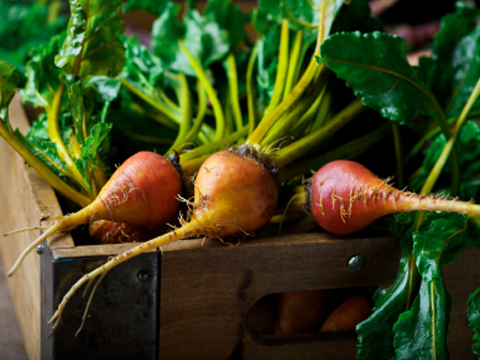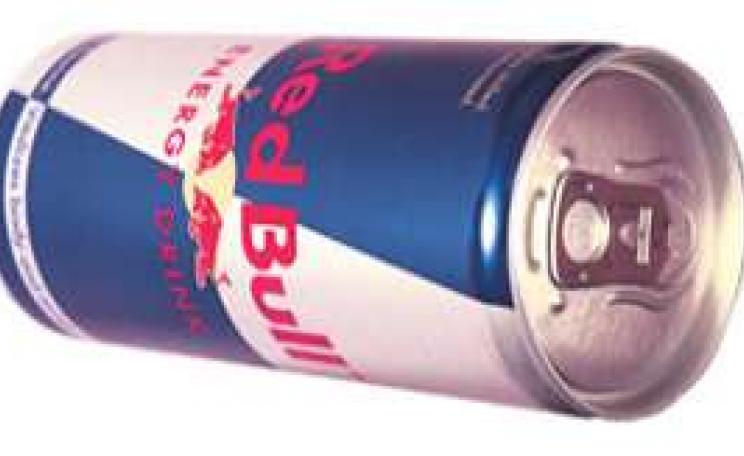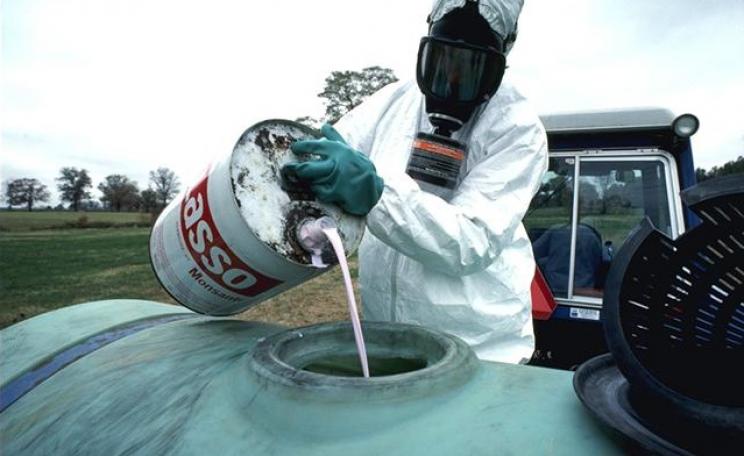 More than ever, I believe that we’ve become increasingly concerned about what’s in the 1,500 pounds of food each of us eats every year. We’re enjoying more lean meat, vegetables and fruits - and trying to cut back on fattening stuff like desserts and fried foods. All of this is certainly a step in the right direction, but many of us still have a long way to go. Our misconceptions run rampant, too. Some people still think margarine is much better than butter (it’s not - margarine is high in nasty, artery-clogging trans fats), so they’ll use twice as much. Or they think granola bars are a healthy snack, when they’re actually processed foods, loaded with fat and sugar.
More than ever, I believe that we’ve become increasingly concerned about what’s in the 1,500 pounds of food each of us eats every year. We’re enjoying more lean meat, vegetables and fruits - and trying to cut back on fattening stuff like desserts and fried foods. All of this is certainly a step in the right direction, but many of us still have a long way to go. Our misconceptions run rampant, too. Some people still think margarine is much better than butter (it’s not - margarine is high in nasty, artery-clogging trans fats), so they’ll use twice as much. Or they think granola bars are a healthy snack, when they’re actually processed foods, loaded with fat and sugar.
The Suppressors
Any dietary problem can turn into a health problem. What I’d like to do is look at what I call the suppressors, foods that negate self-healing. They can make an unexpected appearance in your lifestyle, and you might not even be aware of them. Fortunately, I don’t have a long list so a few little tweaks will obliterate suppressors from your diet.
Added Sugar
Ever wondered why you get cold sores or canker sores after eating candy or sweets? The reason is this: sugar is an ‘immunosuppressant.’ It interferes with the activity of immune-boosting lymphocytes. Your natural defences go down - and you get infections. Imagine 150 bags of sugar piled up in your garage. That’s how much sugar the average person consumes in a year! This means many of us are suppressing our immune systems by eating too much sugar. I believe that if we stopped eating such large amounts, we’d see a major decrease in colds, flu, and other infections.
You may have heard that sugar feeds cancer cells. There is evidence for this, but here is actually what happens: A diet high in sugar and refined foods makes blood sugar, or glucose, spike really high. This spike increases insulin production in the body (insulin helps your cells store and use glucose). Blood chemistry marked by chronically elevated glucose and elevated insulin sets the stage for cancer and its spread. Cancer cells are studded with insulin receptors. Receptors operate like door locks. Once insulin gets to the receptor, it acts like a key and unlocks the receptors on the cell wall. The cell opens up and lets insulin in the cancer cell, where it stimulates the division of the cell. Can you circumvent this process? Yes - in the following ways: avoiding refined sugars and flours, exercising regularly, cutting back on alcohol, reducing stress, and taking certain nutritional supplements. Sugar in all its various forms, including corn syrup, contributes to obesity and therefore to a whole range of related problems such as high blood pressure, heart disease, diabetes, and depression. We don’t really need sugar to live.
Additives
It’s simply not enough to buy healthy, high-quality food; it’s also important that your food be free of harmful additives. Broadly defined, food additives are substances that do not occur naturally in food. They may be ‘direct’ additives that are introduced intentionally into foods to enhance flavour, improve texture, or prevent spoilage. Others are ‘indirect’ additives; these include pollutants that come into contact with food from the environment, during growing, processing, or packaging. The average American takes in about five pounds of additives a year through processed foods. Additives and artificial ingredients add little or no nutritional value to foods and can pose a threat to your health. Try to eat additive-, preservative-, and chemical-free foods whenever possible. Below is my ‘Additive Hit List’ - the most harmful additives known today. You’ll see that a majority are linked to cancer in animals. Yes, I know you’re not a lab rat, but when an additive causes cancer in animals, it may cause cancer in humans, too.
My Additive Hit List
Acesulfame-K
Commercial Use: Artificial sweetener
Sources: Baked goods, chewing gum, gelatine desserts, diet sodas
Health Implications: Animal studies suggest a link to cancer and negative effects on the thyroid gland
Aspartame
Commercial Use: Artificial sweetener
Sources: ‘Diet’ foods, including soft drinks, drink mixes, gelatine desserts, and low-calorie frozen desserts
Health Implications: Animal and human studies hint that lifelong consumption may increase the risk of cancer; and might cause altered brain function
 Blue 2
Blue 2
Commercial Use: Artificial colouring
Sources: Pet food, beverages and candy
Health Implications: May cause brain cancer in male rats
Butylated hydro-xyanisole (BHA)
Commercial Use: Antioxidant used to retard rancidity in fats, oils, and oil-containing foods
Sources: Cereals, chewing gum, potato chips, vegetable oil
Health Implications: The U.S. Department of Health and Human services considers BHA to be ‘reasonably anticipated to be a human carcinogen,’ even though the FDA still allows it to be used in foods.
Caramel colouring
Commercial Use: Food colouring
Sources: Colas, baked goods, precooked meats, soy and Worcestershire sauces, chocolate-flavoured products, beer
Health Implications: Contains certain contaminants that cause cancer in lab animals
Olestra
Commercial Use: Fat substitute
Sources: Some brands of light potato chips
Health Implications: Causes diarrhoea and loose stools, abdominal cramps, flatulence, and other adverse effects; reduces the body’s ability to absorb fat-soluble, cancer-preventing carotenoids (such as beta-carotene and lycopene) from fruits and vegetables.
Potassium bromate
Commercial Use: Flour improver
Sources: White flour, bread, and rolls
Health Implications: May cause cancer in animals (look for ‘bromate-free’ bread)
Propyl gallate
Commercial Use: Antioxidant preservative
Sources: Vegetable oil, meat products, potato sticks, chicken soup base, chewing gum
Health Implications: May cause cancer in animals
Red 3
Commercial Use: Artificial colouring
Sources: Cake icing, fruit roll-ups, chewing gum
Health Implications: May cause thyroid cancer in rats
Saccharin
Commercial Use: Artificial sweetener
Sources: Diet, no-sugar-added products, soft drinks, sweetener packets
Health Implications: May cause bladder cancer in mice and in female rats, and other cancers in both rats and mice
Sodium nitrite, sodium nitrate
Commercial Use: Preservative, colouring, flavouring
Sources: Bacon, ham, frankfurters, luncheon meats, smoked fish, corned beef
Health Implications: Linked to various cancers in humans
Trans fats
Commercial Use: Fat, oil, shortening
Sources: Stick margarine, vegetable shortening, crackers, fried restaurant foods, baked goods, icing, microwave popcorn
Health Implications: Promotes heart disease
Yellow 5
Commercial Use: Artificial colouring
Sources: Gelatine dessert, candy, pet food, baked goods
Health Implications: Yellow 5 is a potential allergen that in susceptible people may cause hives, a runny or stuffy nose, and occasionally, severe breathing difficulties. It may be contaminated with cancer-causing substances
Yellow 6
Commercial Use: Artificial colouring
Sources: Beverages, candy, baked goods
Health Implications: May cause tumours of the adrenal gland and kidney in animals; may cause severe allergic reactions in some people
Food Allergens and Sensitivities  Our immune system stays on high alert. It recognises when an unfriendly substance is present in the body. When it meets such a sub¬stance, the immune system makes protective antibodies or churns out other chemicals to fight it. In susceptible people, the immune system goes a bit overboard. It considers everyday foods or food particles, such as wheat or milk, as unfriendly and tries to fight them off. The result is an allergic reaction that might show up as hives, sneezing, watery eyes, coughing, congestion, diarrhoea, vomiting, bloating, or stomach aches. Though rare, other reactions might be fatigue, headache, or mood swings. Substances that seem to trigger these reactions the most are wheat, milk, eggs, certain nuts, corn, soya, yeast, and chocolate. Certain food additives are common offenders, too.
Our immune system stays on high alert. It recognises when an unfriendly substance is present in the body. When it meets such a sub¬stance, the immune system makes protective antibodies or churns out other chemicals to fight it. In susceptible people, the immune system goes a bit overboard. It considers everyday foods or food particles, such as wheat or milk, as unfriendly and tries to fight them off. The result is an allergic reaction that might show up as hives, sneezing, watery eyes, coughing, congestion, diarrhoea, vomiting, bloating, or stomach aches. Though rare, other reactions might be fatigue, headache, or mood swings. Substances that seem to trigger these reactions the most are wheat, milk, eggs, certain nuts, corn, soya, yeast, and chocolate. Certain food additives are common offenders, too.
Healing a Food Allergy
Food allergy pops up in only one to two percent of Americans, whereas food intolerance occurs in up to a whopping 70 per cent of our population! Where a food allergy is an abnormal reaction to certain food proteins, a food intolerance is a delayed, negative reaction to a substance usually due to insufficient levels of a specific enzyme. There are four main types of food intolerances: lactose, gluten, fructose, and histamine. In lactose intolerance, a person has a hard time digesting the lactose (a milk sugar) in milk or milk products. It is caused by a deficiency in the enzyme lactase. Lactose therefore goes undigested and enters the intestines. Bacteria process the sugar and release gas. This leads to bloating, abdominal pain, and diarrhoea.
A gluten intolerance means the body has a hard time digesting or breaking down gluten. The condition can range from a mild sensitiv¬ity to gluten to full-blown coeliac disease (which is recognised as a true food allergy). A fructose intolerance is a sensitivity to fructose, the natural sugar found in fruits, nuts, and honey. It’s frequently added to sweetened beverages such as sodas, sports drinks, fruit punches, bottled tea and coffee drinks, and flavoured waters (often in the form of high-fructose corn syrup). This intolerance can be mild or serious. The more serious form is known as ‘hereditary fructose intolerance’ and is a rare genetic disorder. With this condition, people lack an enzyme that breaks down fructose during digestion. Hereditary fructose intolerance can lead to liver and kidney damage. Fortunately though, it can be identified and diagnosed at a young age. The other, milder form is called ‘fructose malabsorption.’ It means you have trouble digesting fructose. Among the symptoms are bloating, abdominal cramps, gas, and diarrhoea, but not kidney and liver damage. A lesser-known food intolerance is histamine intolerance. This is a condition in which an enzyme called diamine oxidase (DAO) is faulty and unable to adequately break down histamines in foods. Foods such as pizza, beer, red wine, cured and smoked meats and fish, and many types of cheeses and nuts are high in histamine. When the body can’t degrade histamine, allergy-type symptoms flare up.
The Power of Self-Healing: Unlock Your Natural Healing Potential in 21 Days by Dr Fabrizio Mancini (£12.99, Hay House UK) is available from Amazon
| READ MORE... | |
 |
GREEN LIVING Five of the best…organic veg box schemes Whether you’re looking for seasonal veg or slaughter-free milk, Britain’s box schemes make avoiding the supermarket a cinch |
 |
GREEN LIVING Wine: how green is your glass? Certification is expensive and monitoring of ingredients can be difficult so it can be hard for consumers to make an informed choice about wine. Sophie Laggan takes a look at the options |
 |
GREEN LIVING Ask Ruth: what do the different eco-labels mean? The Ecologist's Green Living Editor finds answers to your ethical dilemmas. This week she’s looking at eco-labels |
 |
GREEN LIVING The A to Z of beauty baddies Confused by chlorobutanol? Baffled by bronopol? George Blacksell has the skinny on beauty’s nastiest additives |
 |
GREEN LIVING How to...beat the January energy slump naturally It’s the afternoon and you can feel that familiar energy slump kicking in. Forget coffee or chocolate, try a healthier alternative, or give yoga, massage or aromatherapy a go instead |





